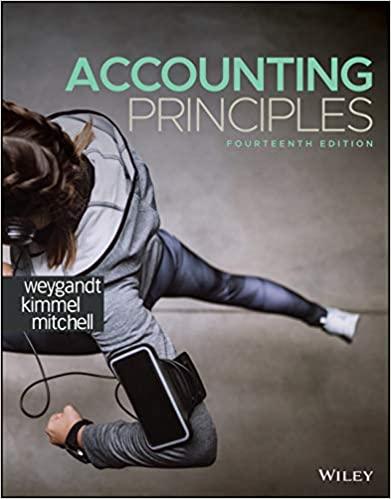Question
THOMAS DRAKE'S 2018 TAX SCENARIO Thomas Drake is a small business owner, operating a manufacturing plant in Chicago, Illinois (as an S-Corp.) He has heard
THOMAS DRAKE'S 2018 TAX SCENARIO
Thomas Drake is a small business owner, operating a manufacturing plant in Chicago, Illinois (as an S-Corp.) He has heard about a new tax break called Section 199A (deduction for qualified business income) wherein he may be entitled to a deduction of up to 20% of his qualified business income. If he can qualify for this deduction, it would result in significant tax savings for his business. Consequently, he contacts your accounting firm to find out exactly what this deduction entails, and how, or if, he can qualify.
Thomas provides the CPA firm with the following information regarding his 2018 estimated income from his business, Rebecca, his spouse's income, and asset and payroll information related to his company. (Thomas and Rebecca file "married filing jointly.")
Item Amount Net Income from Operations (S Corp) $175,000 Spouse's (Rebecca) Income (from unrelated business) $50,000 Corporate Payroll $150,000 Corporate Total Assets $1,500,000 Taxable Income from Form 1040 $160,000 (Total Tax for Drake's after allowable deductions unrelated to the business)
Your team will prepare a tax research memorandum detailing the statutory framework of this deduction, a thorough explanation of Section 199A and all the key definitions, a determination of whether Thomas qualifies for the deduction, a determination of the amount of this deduction, and what Thomas could do to maximize this deduction in the future. The memorandum must be supported by tax research using IRC code, tax cases if any, and other scholarly journals and references. Since some of this data is estimated, he is asking for a general analysis of his tax situation relative to this deduction.
Some specific issues which must be addressed are the following:
- What is qualified business income (QBI)? What is included and what is not?
- What is a qualified trade or business (SSTB)?
- Any limitations, income or otherwise on this deduction?
- What are some planning strategies for help Thomas maximize this deduction in future years?
- What is an estimate of the amount of the deduction for 2018, if any?
The memorandum should be 7 - 10 pages with references to the IRC code and other tax support. This memorandum will serve as the basis for the team PowerPoint presentation due in Week 8.
Performing tax research to find correct answers to a given tax situation, and composing memorandums summarizing these findings, are important parts of tax practice. As outlined in your text, there are several authoritative primary tax law sources. The first, the Internal Revenue Code, is the law enacted by Congress. The Treasury Department and the Internal Revenue Service publish a number of materials that interpret and provide decisions, pronouncing their interpretation and application of the Code, including treasury regulations, revenue rulings, and revenue procedures. Finally, courts are often asked to hear tax disputes between taxpayers and the United States, and these courts issue rulings that interpret and apply the tax law, creating additional tax authority in the process. These combined writings constitute primary tax law authority, and these are the authorities that tax practitioners rely upon when a client asks for their opinions regarding how a proposed or a completed transaction should be treated for tax purposes.
Some of the more significant guidelines for this tax memorandum include the following:
- Your submission must be completed in Microsoft Word.
- You must use a reasonably easy-to-read font, such as Times New Roman or Arial, in at least a 12-point font size. Each page must have at least a 1-inch margin on all sides and be double spaced.
- Appropriate citations are required.
- The tax memorandum must be in traditional tax memorandum format, as outlined in your text.
- All DeVry University policies are in effect, including the Plagiarism Policy.
- The team paper is due at the end of Week 7 of the course.
- This assignment is worth 120 points. You will be graded on the overall quality of your submission, including the quality and thoroughness of your analysis and the professionalism of your submission. (See the grading rubric).
Tax research memorandum uses a fairly standard format and structure. There are points allocated for each section. Please see Grading Rubric. The four sections include the following.
- Facts:In this section, you summarize the facts about the transaction or events that are relevant and material to the tax questions being asked. Frame them as precisely and succinctly as possible, and write them so that they can be understood by someone who has no knowledge of the underlying facts.
- Issues:This is a succinct question that you are trying to answer or resolve in the memorandum.
- Analysis:This section contains all of the substantive analysis that you needed to perform in order to come to reach a conclusion on the issue presented. It discusses, in logical order, the various tax authorities to establish the tax rule or rules that apply to the fact pattern given. This includes such efforts as an analysis of the facts of these other cases and the language of the applicable Code section(s) at issue. Once the rules are established, it then applies those rules to the facts in the case.
- Conclusions:This section provides the answer to the taxpayer's inquiry along with any tax planning suggestions for future implementation.
Step by Step Solution
There are 3 Steps involved in it
Step: 1

Get Instant Access to Expert-Tailored Solutions
See step-by-step solutions with expert insights and AI powered tools for academic success
Step: 2

Step: 3

Ace Your Homework with AI
Get the answers you need in no time with our AI-driven, step-by-step assistance
Get Started


